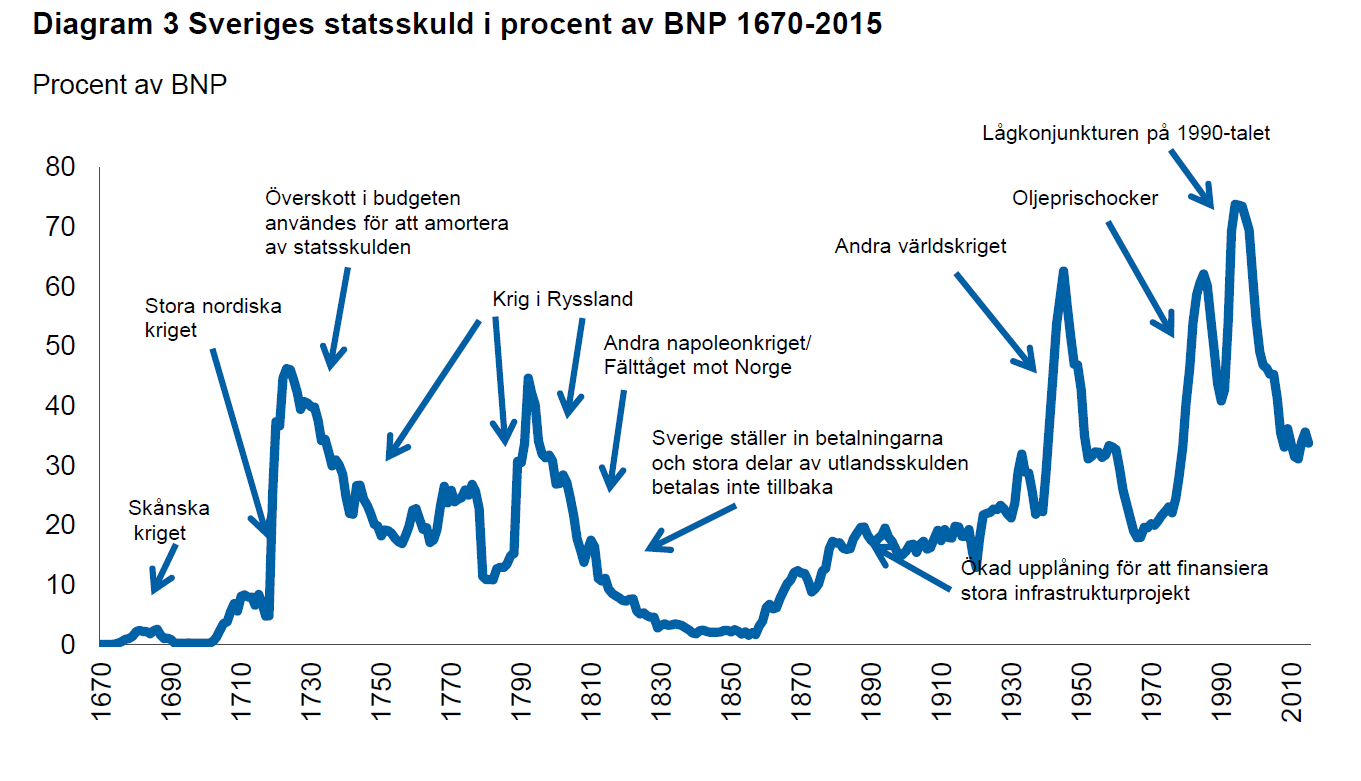At riksgalden.se, we use cookies to improve your experience on our website and to collect statistics. We also use cookies for analyzing to improve our website. More about cookies.
History of the Swedish National Debt Office
Throughout the 1700s, Swedish government finances were in disarray. This was due to the many wars, which never seemed to turn a profit. The national debt kept growing, and monetary value fluctuated.

As the Swedish economy depended largely on self-sufficient farmers, there were only two ways for the state to obtain money if the coffers were empty: borrow money in the trading cities of Europe, or to simply manufacture more money. Both methods were employed.
Establishment of the National Debt Office
Following the death of Charles XII in 1719, the earliest version of the Debt Office was instated. Its task was to repay the debts that were owed following Charles XII’s military expeditions. The office consisted of one representative each from the nobility, the clergy and the burghers, and eventually with the addition of a chosen representative from the so-called fourth estate, i.e. the peasants.
In 1765, the operation was transferred to a division within the administration that is now the Swedish Agency for Public Management, where it was given its current name. In 1777, a directorate was established consisting of a president and three officials.
Unlike Charles XII, Gustav III started a war but had no military success. The debts kept growing. As did the opposition. Gustav III, who was strongly influenced by the Enlightenment philosophers of his time, did not heed the advice given to him by the old French king Louis XV when he was about to ascend the throne: unify the kingdom. Instead, he carried out a coup in 1772, deposed the council of the realm, disbanded all political parties and limited the freedom of the press. This is the context in which the National Debt Office was established – as an attempt to appease the opposition and bring order to the nation’s finances.
It was the king’s confidant, Bishop Olof Wallquist of Växjö, who implemented the great reorganisation, and the National Debt Office was established as a separate administrative agency in 1789. The king was assassinated at a masquerade ball in 1792 – but the National Debt Office lived on.
Should one wish to do so, it is possible to read Sweden’s history through that of the Debt Office.

| Year | What happened |
|---|---|
|
1789 |
The National Debt Office was formed to manage the national debt. In the 18th century, Sweden’s debts kept growing, and inflation was high. Sweden borrowed money for a multitude of reasons, including to finance its war with Russia. |
|
1808–1809 |
The national debt was at a record high after Sweden lost the Finnish War against Russia. |
|
1818 |
Sweden had a massive foreign debt, which it refused to pay. Two-thirds of the debt was foreign debt. For this reason, the government paid off much of the foreign debt. King Charles XIV Johan paid the final third himself, and pledged the Swedish province of Pomerania in northern Germany against payment in silver. |
|
1834 |
Despite the hard times, the national debt was more or less paid, and instead the National Debt office was holding foreign claims. |
|
1910 |
Sweden borrowed abroad to make investments in infrastructure: railways, hydropower and telephones. For this reason, it had a relatively large currency debt. |
|
1970s |
There was a massive increase in oil prices in 1973 and 1979. This led to an international recession, and the Swedish economy became unbalanced. Sweden took out foreign loans to finance the budget deficit, and the interest rates rose rapidly. |
|
1990–1994 |
The government finances were in poor shape and the national debt doubled from SEK 600 billion to SEK 1,300 billion (or from 44 to 78 per cent of GDP). |
|
Late 1990s and early 2000s |
After strict cuts in government expenditure, the economy recovered and the public deficit declined. Over a five-year period around the turn of the millennium, there was a surplus in the budget, largely because of high tax revenue. |
|
2005 |
The budget was once again indicating a surplus, following a few years of relatively large deficits. |
Sweden: National debt in percents of GDP 1670 -2015


